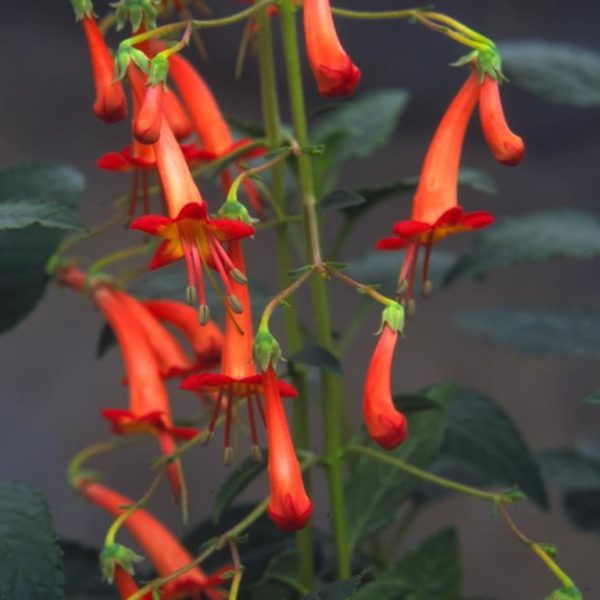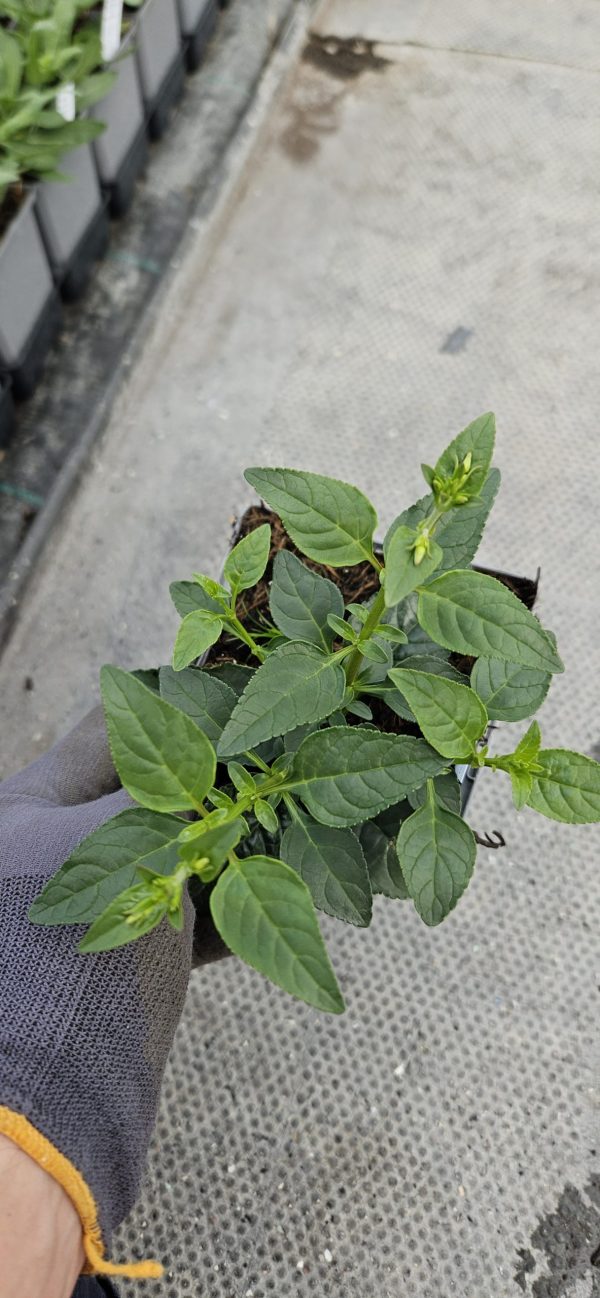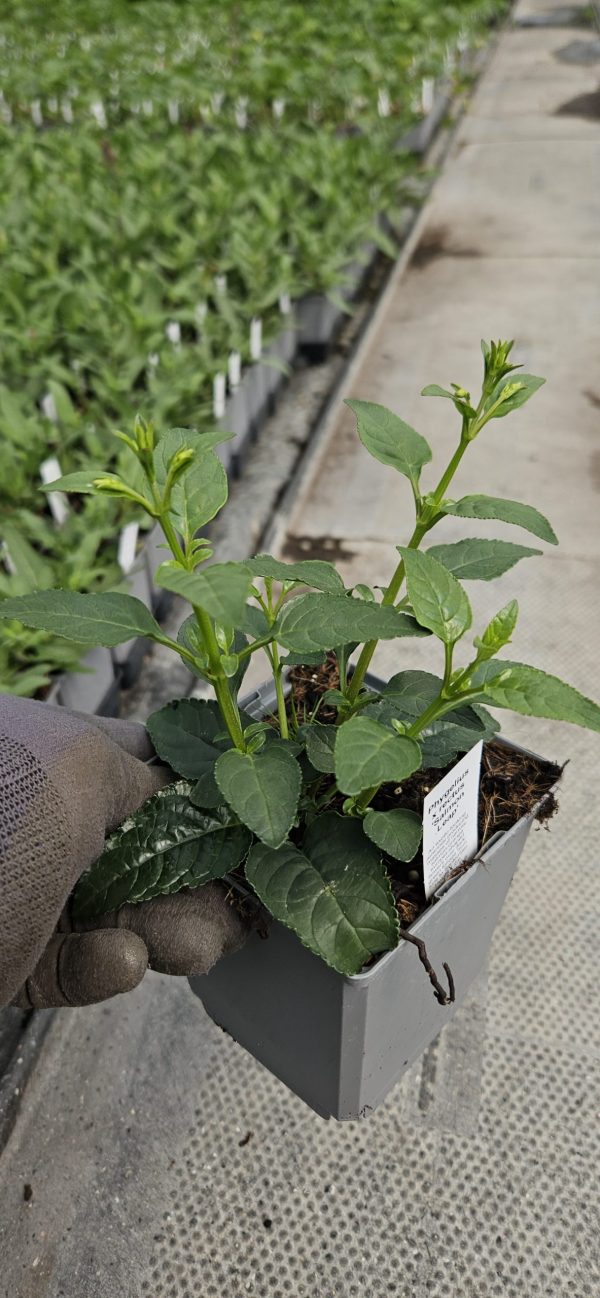Phygelius x rectus ‘Salmon Leap’
£6.45
An exotic-looking perennial producing masses of narrow, salmon-orange trumpet-shaped flowers over dark-green foliage from June to September. Height 1.2m. Spread 1.5m. Full sun/part shade, free-draining soil. Hardy.
Description
Phygelius x rectus ‘Salmon Leap’ is a stunning perennial that will bring vibrant salmon-pink tubular flowers to your garden. Whether planted in containers, borders, or as part of a mixed display, this plant is known for its striking blooms and elegant form. Follow this guide to ensure your Phygelius x rectus ‘Salmon Leap’ thrives and provides you with a spectacular show of colour.
PLANTING and AFTERCARE GUIDE
Best Planting Time
- Spring: The best time to plant Phygelius x rectus ‘Salmon Leap’ is in the spring when the soil begins to warm. This gives the roots a chance to establish before the growing season, allowing for healthy growth and a long blooming period.
- Autumn: You can also plant in early autumn. Planting in autumn allows the plant to settle in and establish roots before entering dormancy, resulting in stronger growth the following spring.
Site Selection
- Sunlight: Phygelius thrives in full sun to partial shade. For optimal growth and a more abundant flower display, choose a location that receives at least 6 hours of direct sunlight each day. In regions with harsher climates, partial shade may be beneficial during the hottest part of the day.
- Soil: This plant prefers well-drained, slightly acidic to neutral soil. Phygelius waterlogged conditions, so it’s essential to ensure good drainage. Enrich the soil with organic matter like compost to promote healthy root development.
Planting Instructions
- Prepare the Hole: Dig a hole that is twice the width and the same depth as the root ball of Phygelius x rectus ‘Salmon Leap’. This allows the roots ample space to spread and establish.
- Soil Preparation: Mix in compost or well-rotted organic matter into the planting hole. This enriches the soil and improves drainage, giving your Phygelius the best start.
- Planting: Position the root ball so that it is level with the surrounding soil. Backfill the hole gently, firming the soil to remove any air pockets that could hinder root growth.
- Watering After Planting: Water thoroughly after planting to settle the soil around the roots. Ensure good drainage to prevent waterlogging, which can harm the plant.
Watering Requirements
- Growing Season: Once established, Phygelius is moderately drought-tolerant. Water the plant during dry spells, but allow the soil to dry out between watering. Avoid overwatering, as excessive moisture can cause root rot.
- Dormant Season: In winter or during dormancy, reduce watering significantly. Only water if the soil becomes extremely dry, as Phygelius does not require much moisture in the dormant phase.
Feeding
- Spring: Apply a balanced fertiliser in early spring to give your Phygelius a strong start to the growing season. This will encourage vigorous growth and abundant blooms.
- Mid-Summer: A light application of fertiliser in mid-summer can help maintain plant health and encourage continuous flowering throughout the blooming period.
Pruning
- Deadheading: Remove spent flowers regularly to encourage more blooms and keep the plant tidy. Deadheading also prevents the plant from putting energy into seed production and directs resources to new growth and flowering.
- Autumn Pruning: Once the blooming season ends, cut back your Phygelius to the ground. This will prepare the plant for winter dormancy and help ensure healthier growth the following season.
Mulching
- Spring: In spring, apply a layer of mulch around the base of your Phygelius to conserve moisture, suppress weeds, and regulate soil temperature. Use organic mulches like bark chips or compost for the best results.
- Winter: In colder climates, adding a layer of mulch around the base of your plant in winter can help protect the roots from freezing temperatures and prevent frost damage.
Supporting the Plant
- Staking: Phygelius x rectus ‘Salmon Leap’ has a somewhat tall, upright growth habit, but it generally does not require staking. However, in exposed or windy locations, consider staking to prevent wind damage or flopping.
Final Tips
Phygelius x rectus ‘Salmon Leap’ is a versatile and easy-to-grow perennial that will reward you with vibrant salmon-pink blooms throughout the growing season. By following these planting and care guidelines, you’ll ensure that your Phygelius thrives in your garden, enhancing your landscape with its colourful, trumpet-shaped flowers. Whether in a sunny border, a container, or as part of a mixed planting, Phygelius is sure to be a striking addition to your garden.
Additional information
| Pot Size |
|---|











Reviews
There are no reviews yet.